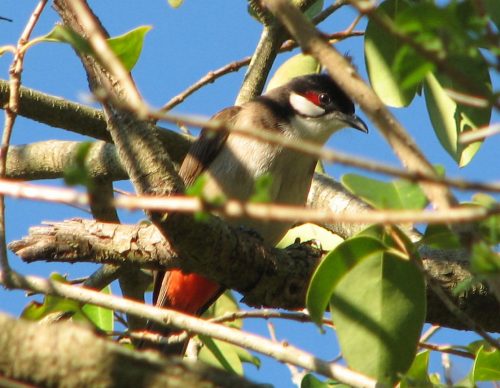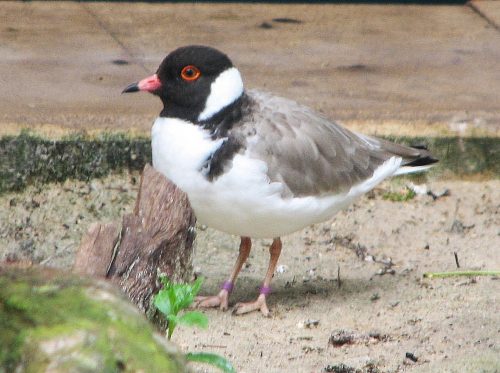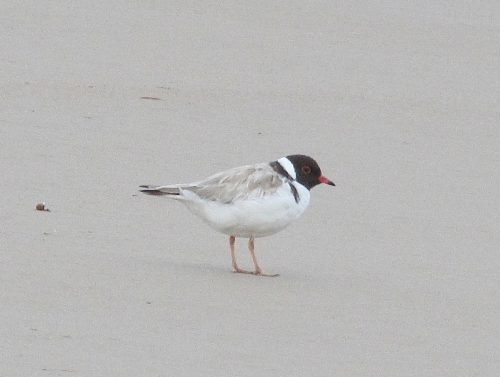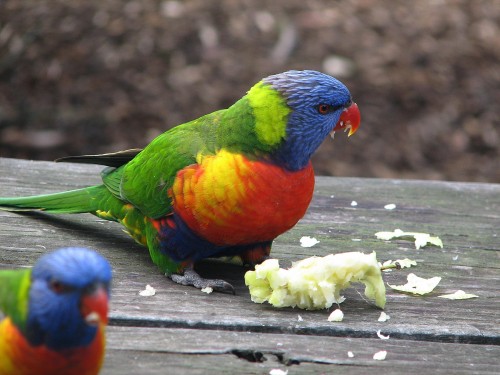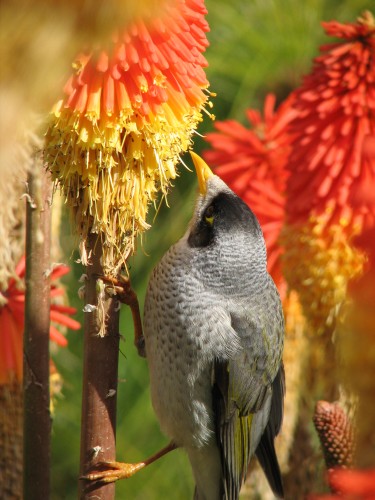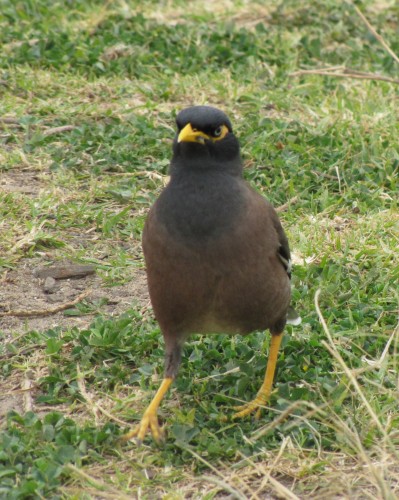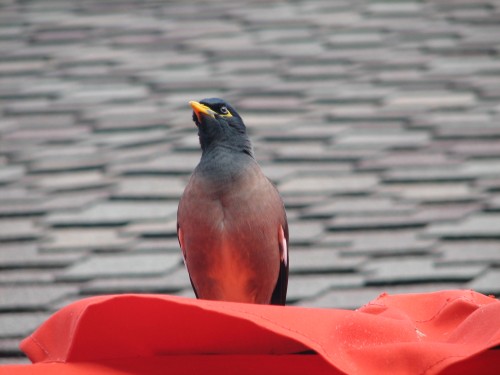It’s Magpie Swooping season again
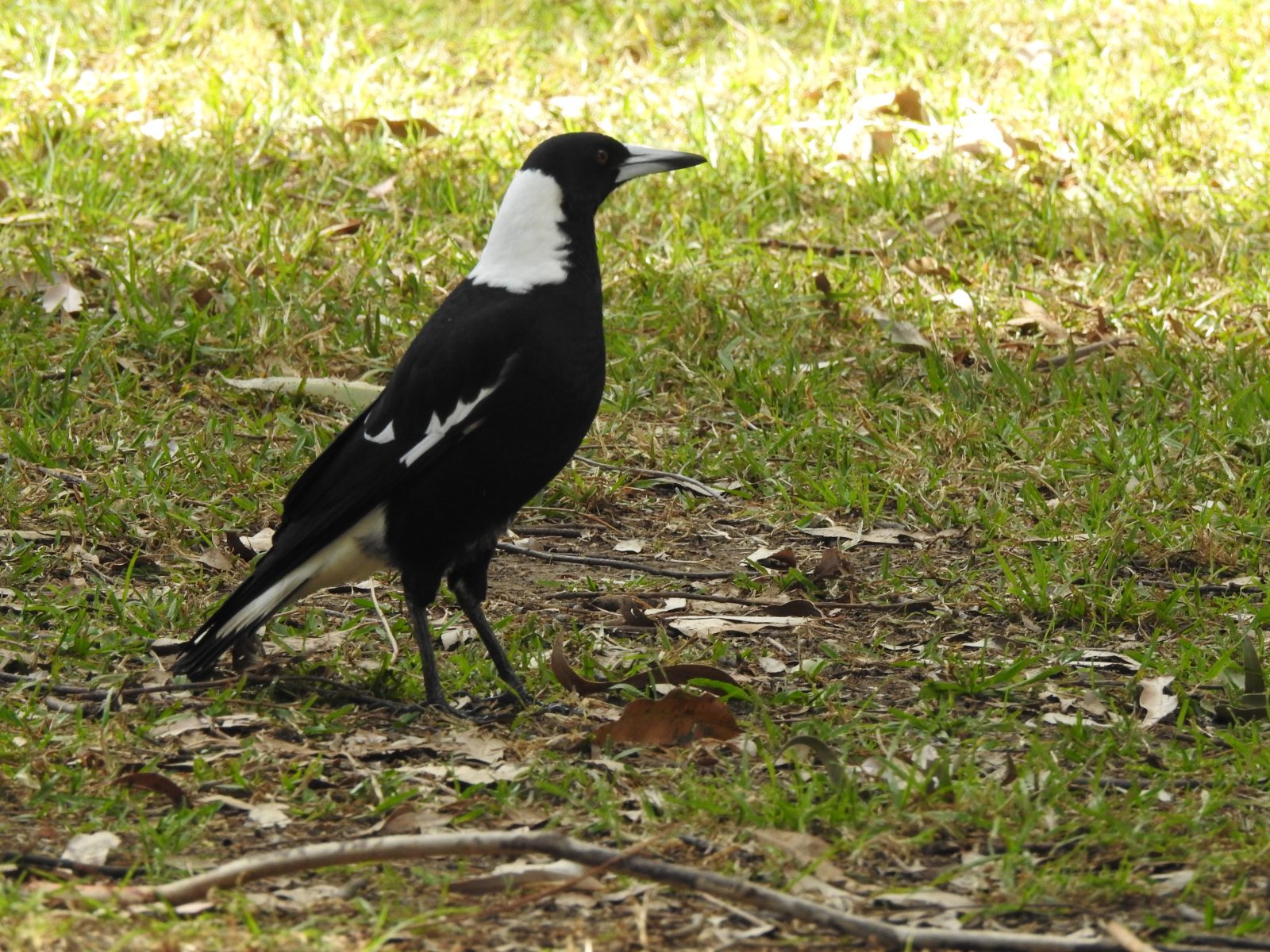
It is magpie swooping season again throughout Australia where Australian Magpies are found. That’s pretty much everywhere in Australia. This species is usually quite happy to co-exist with humans and will go about its life quite independently of us. They are relatively common in urban areas and very common in rural and farming environments.
Aggressive birds
Some individual Australian Magpies, however, have a very aggressive behaviour towards people during the nesting season, swooping them if they come anywhere near to their nest. This is particularly troublesome to young children who are sometimes terrified by a swooping bird. The elderly are also vulnerable as this story relates. Sadly, the elderly man who fell from his bicycle trying to get away from a swooping magpie severely injured his head when he hit a fence. He later died in hospital.
While this incident had a tragic outcome, this is not normal. Certainly, many people are terrorised by nesting magpies. Some have incurred serious injuries as a result, including eye injuries. My own sister-in-law suffered serious cuts to her scalp during a magpie attack when she was quite young. I also seem to remember a newspaper report of a cyclist who, in attempting to avoid being swooped actually rode into the path of a car and was injured by the car but not the bird.
Over the years I have written quite a few articles addressing this issue. I have listed some of them below. Some of these articles give advice on how to avoid getting swooped.
Further reading:
The Problem of Swooping Magpies
Do Blackbirds Swoop? Dealing with Aggressive Birds
Pesky Plovers – dealing with swooping birds
I invite readers to add their comments on how they deal with swooping birds. Or, you can comment on experiences with pesky birds.
Good birding – and stay safe.
Trevor
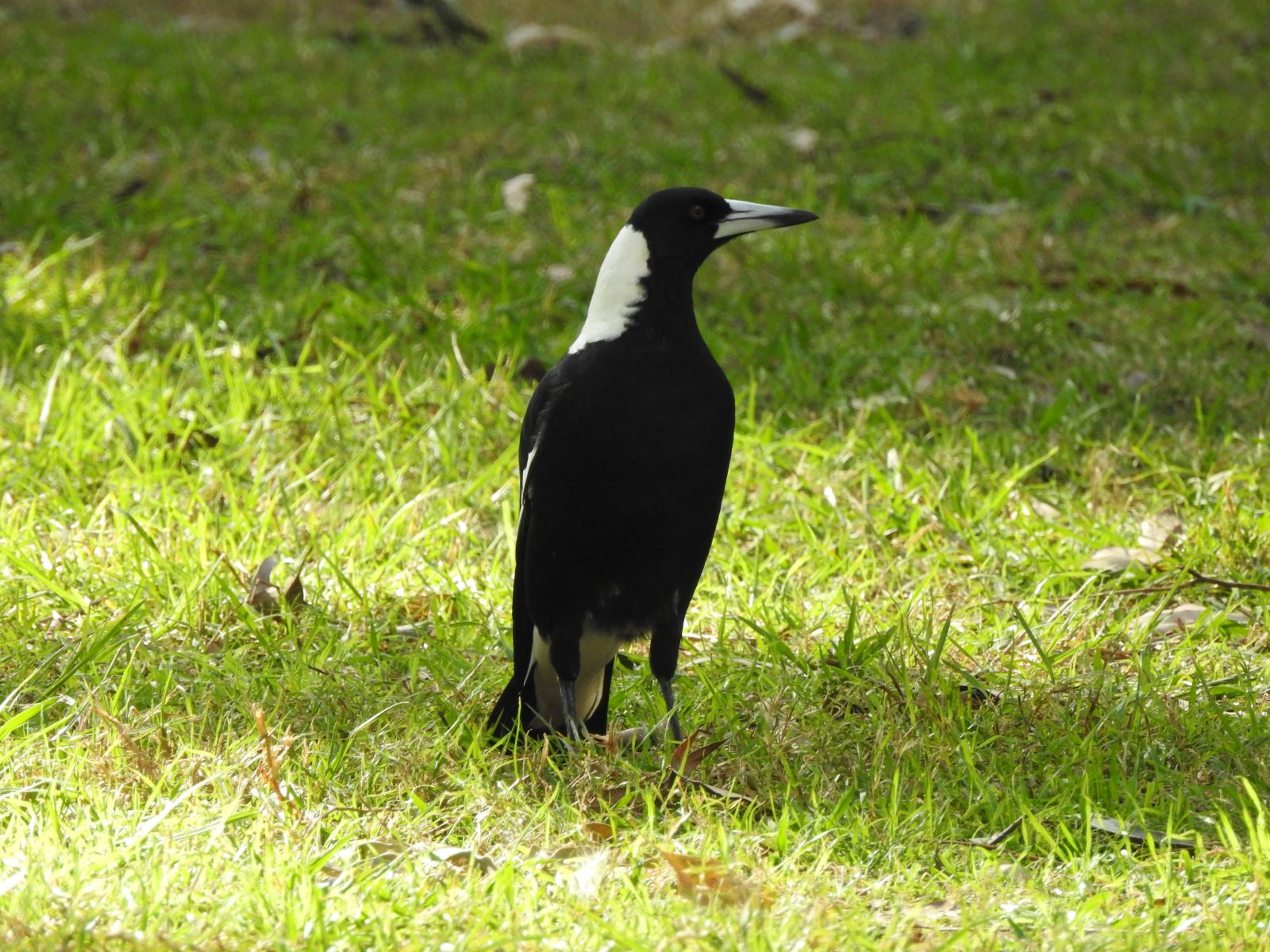
Red-whiskered Bulbuls in South Australia
In yesterday’s Advertiser paper here in South Australia, they featured a story about the recent reports of Red-whiskered Bulbuls. This is an introduced species from the India, and potentially a major pest species here in our state. It is a threat to several significant agricultural industries, including wine grapes, the citrus and strawberries.They are also a major threat to our native bird species.
I have known about some reports late last year from Mt Torrens in the Adelaide Hills region, one of our major fruit growing areas. More recently, the article claims that there has been a recent sighting in Eudunda, a mid-north town very close to the world-renowned wine growing region of the Clare Valley.
The article goes on to say that Biosecurity SA has spent $60,000 in their attempt to capture and destroy 10 known birds in the region. That seems a great price to pay for so few birds, but the threat to a 400 million dollar fruit industry is very real. There is a hefty fine for anyone releasing this species into the environment, a practice sometimes undertaken at weddings or anniversaries. Even keeping this species in captivity is banned here in South Australia.
There is an ever-present threat that some may inadvertently or deliberately be released here. The species is present in both the Melbourne and Sydney regions. The photo above was taken on a walk I did some years ago in Sydney. This was along the Flat Rock Creek to Middle Harbour walking track. The only other place I have seen this species was at the Australian Botanic Gardens at Mt Annan, also in the Sydney region.
I wanted to link to the article in The Advertiser but it is a restricted article; one needs to take out a digital subscription to the paper.
An appeal to save our Hooded Plovers
Here in South Australia, there has been some interest generated in the media in recent weeks about the plight of the Hooded Plover. A pair of this species was found to be nesting on one of our popular beaches. There was much concern over protecting the eggs from damage or predation.
This tiny bird is widespread along the coast of South Australia and all of southern Australia, including Tasmania. Nowhere is it common, and everywhere it is threatened. It is estimated that fewer than 2500 of these lovely birds exist. And during the summer months, when they nesting, they are most vulnerable.
During the summer months, when they nesting, they are most vulnerable. They make their nest by making a small depression in the beach sand. In this hollow, they lay and hatch their eggs. Surveys have shown that as few as only 2.5% of eggs actually make it to adulthood. That is a shocking statistic; it is NOT a typo.
The eggs can be damaged in many ways:
- The eggs can be trampled on by people, dogs, horses or vehicles (we still have some beaches with car access here in South Australia – all in Hooded Plover nesting areas).
- Overheating when the eggs are exposed to the burning sun after the adult is scared from the nest.
- Eggs left too long and becoming too cold without the warmth of the adult sitting. This also happens when the adult is chased from the nest by the presence of humans, dogs, and other animals.
- The eggs can also be taken by predators such as foxes, cats, ravens, magpies, gulls and eagles.
If the eggs survive to hatch, the young can die:
- By being run over by vehicles, or stepped on by humans.
- Eaten by predators like foxes, cats, and birds of prey.
What you can do
You may be thinking that you can’t do much to save these, and other, threatened birds.
Think again.
Just by being aware of our wildlife when you go to the beach this summer, and drawing the plight of birds like the Hooded Plover to the attention of family, friends and other beach goers, you can do your bit to save them for future generations.
Donate
I don’t often make appeals for money on this site; in fact, I am sure I have never done so. This is different. Birdlife Australia is running a special appeal for these little birds this summer. You can donate here.
Become a Member
Why not become a member of Birdlife Australia? I have been a member for many decades. They pour large amounts of money into bird conservation, advocacy and research. Membership also provides you with discounts on a range of products and services, and you get their colourful quarterly magazine as well. You can join here.
Further reading:
Good birding,
Trevor
Aussie Backyard Bird Count
Non-Australian Readers
This post comes with an apology to my many non-Australian readers. The information I am sharing today is for Australian readers only. Sorry about that. Normal transmissions will resume shortly.
Australian readers:
Over the next week or two people around Australia are being encouraged to go out into their backyards and watch the birds. That’s a great idea. The Aussie Backyard Bird Count is more than just looking at our birds, however. You are encouraged to not only look at the birds you see, you are also asked to write down a list of the species you see and how many of each species. Then you are asked to submit these sightings to the Aussie Backyard Bird Count (see link below).
Simple.
How, when and where
All it takes is twenty minutes. It doesn’t have to be in your garden or backyard. It could the park across the road, the oval down the street, in the school playground or even on a picnic in your local patch. It doesn’t matter if you are having trouble identifying a bird – the site even has an app for that. Great – use their bird identifier. If that doesn’t help, you can leave that bird out.
The 2015 Aussie Backyard Bird count runs from October 19th to the 25th, but you can start straight away. People are already submitting their sightings.
Why
This Australia-wide survey is an annual event which gives our conservationists a great opportunity to get a snapshot of the bird health of our nation. By participating you will contribute valuable data to our already good knowledge of our birds.
Update 27th October: the survey is now over with over 1.08 million bird sightings.
Link:
Miners v Mynas
I was a little amused last week when there was quite a flurry of correspondence in the Letters to the Editor section of our state-wide newspaper, The Advertiser. A reader wrote in complaining that something should be done about Myna birds in his suburb which he considered pests. He claimed that they were chasing away all the other birds, especially the smaller ones such at wrens and thornbills.
The next day the paper printed a whole page of rebuttals – or rather, a raft of claims of mistaken identity. Several years ago I, too, experienced getting into a long discussion with someone who was adamant that there were Mynas around the Salisbury area in the north of the city. They just would not be convinced otherwise.
The fact remains that there are currently no Common Mynas (also known as Indian Mynas) in South Australia. This introduced species is, however, relatively common in the eastern states and their range is increasing. Only last week my 7yo grandson reported that they now have them in their garden in Artarmon for the first time. (I have seen them up the street but never in their garden.) I have included a photo of a Common Myna below, taken several years ago in the Taronga Park Zoo in Sydney, a few suburbs away from my son’s home.
The species that the correspondent was concerned about was the Noisy Miner, an Australian native honeyeater species as shown in the photo above, taken a few years ago in the Adelaide Botanic Gardens. The Noisy Miner is a gregarious and mostly aggressive species which can be very dominant in some situations. Their bossy ways discourage smaller species like wrens, thornbills and other honeyeaters until those species leave and never return. One of the ways of combating their habits is to plant up gardens with smaller Australian native plants because they prefer more open, grassy, lawned areas.
As an interesting aside, we do not have Noisy Miners on our five acre block on the edge of Murray Bridge. They are relatively common along the river reserves and throughout the town, but in over 30 years they have never – to my knowledge – visited out property, though I have expected them for some years now. I did see one small family group about 500 metres down the side road from our place, but so far they have not moved any closer. We certainly do not want them invading our orchard – the Mallee Ringneck parrots are pest enough in the fruit trees. (Placing bird netting over the trees mostly works effectively.)
The threat of Common Mynas
The following is a quote from our government department PIRSA (Primary Industry):
The species is listed by the IUCN (World Conservation Union) as one of 100 of the world’s worst invasive alien species alongside Common Starlings, Red Foxes and Cane Toads. The Common Myna is a moderate pest of agriculture causing damage to orchard fruits such as fig, apple, pear, strawberry, guava, mango and grape. It also damages standing cereal crops including maize, wheat and rice.
In several countries it is considered an environmental pest and is reported to eat eggs and young birds and mammals including endangered species. The Common Myna aggressively competes for nest hollows and food, adversely affecting the breeding success of other birds and hollow-nesting mammals. It has been observed
attacking terns on islands as well as taking the eggs of other sea birds, possibly interfering with those birds’ breeding and general behaviour. The Common Myna is also known to spread avian malaria to other birds.
Further reading:
- Website: Primary Industry and Regions South Australia – this page lists 6 PDF documents relating to potential pest bird species in South Australia: Common Myna, Canada Goose, Red-whiskered Bulbul, Common House Crow, Indian Ring-neck Parakeet and Barbary Dove. It also has other documents relating to potential animal pests such as the Cane Toad.
- This is not a minor threat
- Birds in the Sydney CBD
- Noisy Miners causing problems
- Great birding moments #10 Noisy Miner Adelaide Botanic Gardens
